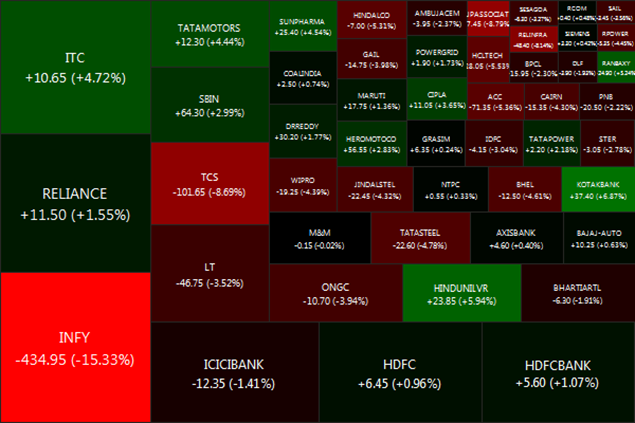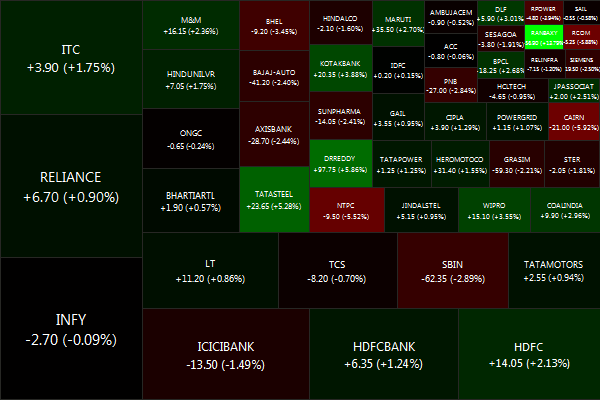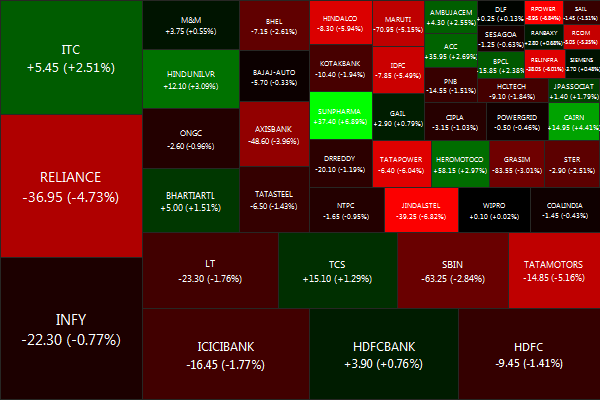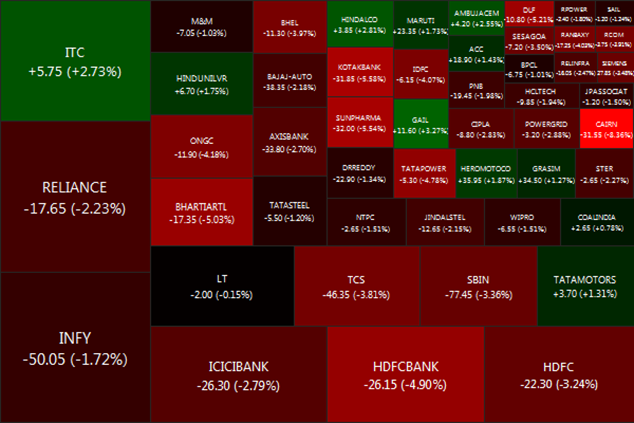The NIFTY ended on a negative tone, drifting down -1.39% for the week.
Biggest losers were INFY(-15.33%), JPASSOCIAT(-8.79%) and TCS(-8.69%). And the biggest winners were KOTAKBANK(6.87%), HINDUNILVR(5.94%) and RANBAXY(5.24%)
Decliners eclipsed advancers 27 vs 23
Gold: 1.61%, Infrastructure: 1.49% and Banks: 0.91%
Daily news summaries are here.




